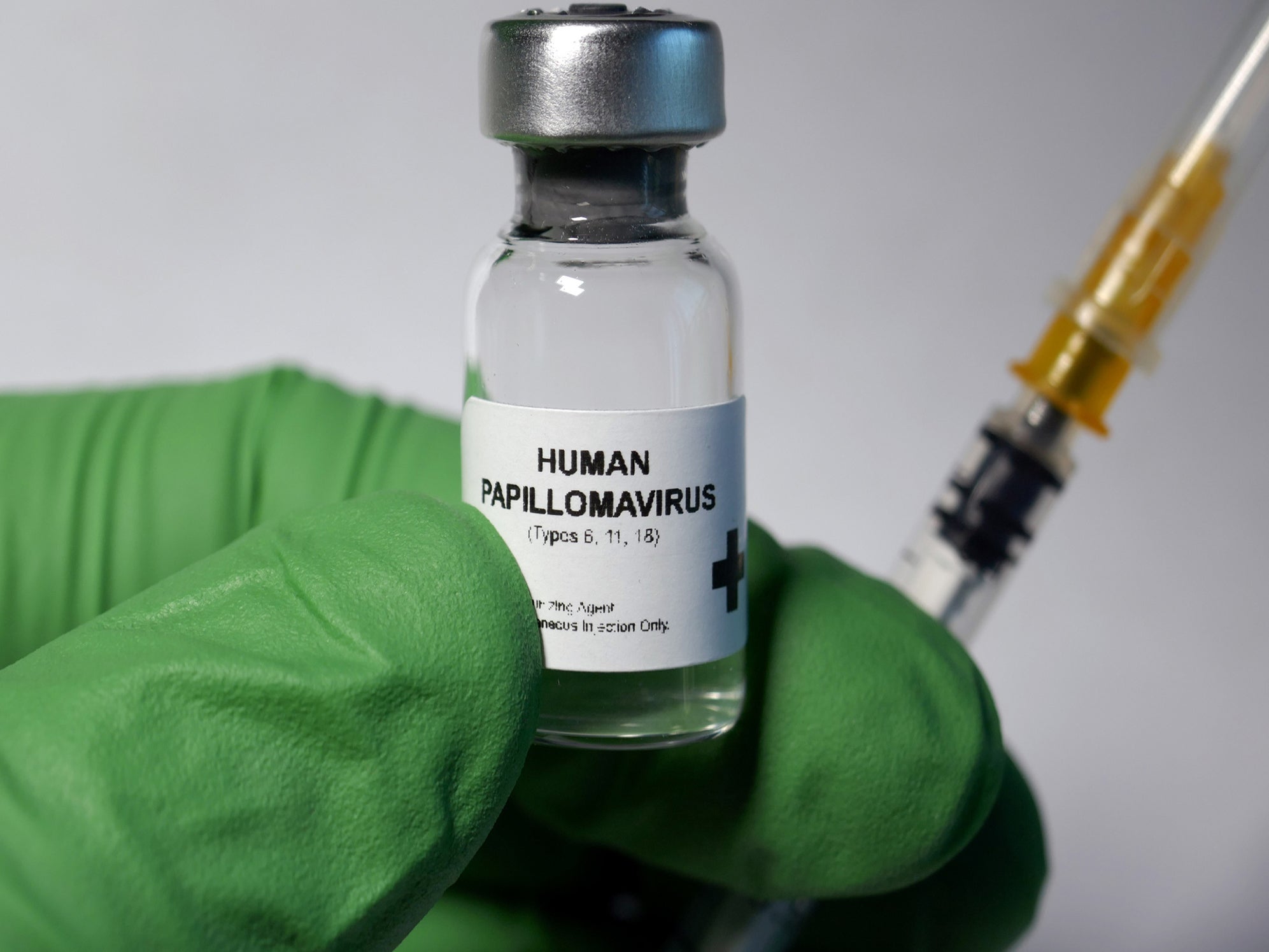Cervical cancer ‘could be eliminated’ by widespread HPV vaccination programmes, study finds
Declines in the HPV 'endpoints' were found eight to nine years after girls-only vaccination

Your support helps us to tell the story
From reproductive rights to climate change to Big Tech, The Independent is on the ground when the story is developing. Whether it's investigating the financials of Elon Musk's pro-Trump PAC or producing our latest documentary, 'The A Word', which shines a light on the American women fighting for reproductive rights, we know how important it is to parse out the facts from the messaging.
At such a critical moment in US history, we need reporters on the ground. Your donation allows us to keep sending journalists to speak to both sides of the story.
The Independent is trusted by Americans across the entire political spectrum. And unlike many other quality news outlets, we choose not to lock Americans out of our reporting and analysis with paywalls. We believe quality journalism should be available to everyone, paid for by those who can afford it.
Your support makes all the difference.Cervical cancer could be eliminated by widespread human papilloma virus (HPV) vaccination programmes, according to scientists who reviewed studies of 60 million people in affluent countries.
The treatment was linked to a huge reduction in the two types of HPV – 16 and 18 – which cause 70 per cent of cervical cancers, research found.
Rates of both types of HPV in high-income countries, among girls aged 13 to 19, plummeted by up to 83 per cent following five to eight years of vaccination, while a reduction of 66 per cent was found in women aged 20 to 24.
A significant decrease was also seen in anogenital wart diagnoses and precancerous cervical lesions which can develop into cancer.
“Because of our finding, we believe the World Health Organisation (WHO) call for action to eliminate cervical cancer may be possible in many countries if sufficient vaccination coverage can be achieved,” said Professor Marc Brisson, a member of the research team.
The researchers, whose work was published in The Lancet journal, analysed 65 studies from 14 high-income countries.
Declines in the HPV “endpoints” were found eight to nine years after girls-only vaccination.
The findings support the recently revised WHO position on vaccinating multiple age groups, rather than a single cohort, when introducing the vaccine.
The NHS currently offers the first dose of the HPV vaccine to girls aged 12 and 13, with a second six to 12 months later.
Earlier analysis of studies for four years post-vaccination has also shown substantial decreases in HPV 16 and 18.
The studies looked at for the new research compared levels of one or more HPV endpoints across pre and post-vaccination periods.
An overall 54 per cent reduction was also found in three other types of HPV – 31, 33 and 45 – in girls aged 13 to 19. Meanwhile, a decrease in anogenital warts of 67 per cent was seen in girls aged 15 to 19, 54 per cent in women aged 20 to 24 and 31 per cent in those aged 25 to 29.
Reductions of 48 per cent were found in boys aged 15 to 19 and 32 per cent in men aged 20 to 24 years.
Five to nine years after vaccination, precancerous cervical lesions decreased by 51 per cent in screened girls aged 15 to 19 and by 31 per cent in women aged 20 to 24.
Co-researcher Melanie Drolet, from the CHU de Quebec-Laval University Research Centre, said: “Our results provide strong evidence that HPV vaccination works to prevent cervical cancer in real-world settings, as both HPV infections that cause most cervical cancers and precancerous cervical lesions are decreasing.”
She said the research “reinforces WHO’s recently revised position on HPV vaccination”.
Professor Brisson, from Laval University, Canada, said “it will be crucial” now to continue to monitor the impacts of vaccination programmes.
But the findings should not be extrapolated to low and middle-income countries where the burden of disease was far greater, the team warned.
Their research also found there were greater and faster impacts, and herd effects, in countries with both multi-cohort vaccination and high vaccination coverage.
Anogenital wart diagnoses declined by 88 per cent among girls and 86 per cent in boys aged 15-19 in these countries, compared with 44 per cent and 1 per cent respectively in countries with single-cohort or low coverage.
Likewise, after five to eight years of vaccination, precancerous cervical lesions decreased by 57 per cent in girls aged 15 to 19, while there was no decrease in countries with single-cohort vaccination or low routine coverage.
Professor Silvia de Sanjose, from the Path organisation in the USA, said optimising HPV vaccination programmes could make it “a hallmark investment of cancer prevention in the 21st century”.
Press Association
Subscribe to Independent Premium to bookmark this article
Want to bookmark your favourite articles and stories to read or reference later? Start your Independent Premium subscription today.
Join our commenting forum
Join thought-provoking conversations, follow other Independent readers and see their replies
Comments